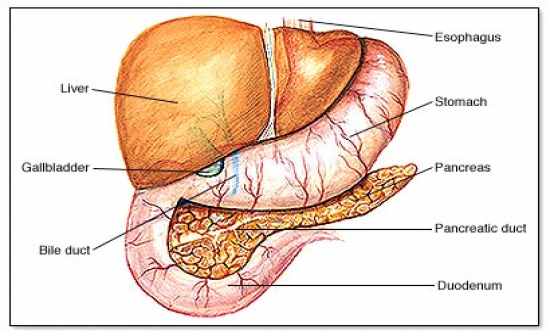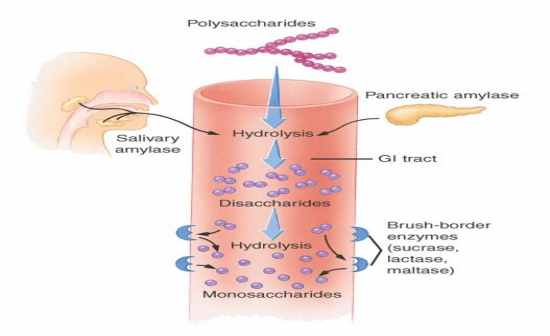Cards In This Set
| Front | Back |
|
Epiglottis
|
The epiglottis is flap of cartilage located in the throat behind the tongue and in front of the larynx. The epiglottis is usually upright at rest allowing air to pass into the larynx and lungs. When a person swallows the epiglottis folds backward to cover the entrance of the larynx so food and liquid do not enter the windpipe and lungs. After swallowing the epiglottis returns to its original upright position.
  |
|
Peristalisis
|
Peristalsis is a series of wave-like muscle contractions that moves food to different processing stations in the digestive tract. The process of peristalsis begins in the esophagus when a bolus of food is swallowed. The strong wave-like motions of the smooth muscle in the esophagus carry the food to the stomach, where it is churned into a liquid mixture called chyme.
Next, peristalsis continues in the small intestine where it mixes and shifts the chyme back and forth, allowing nutrients to be absorbed into the bloodstream through the small intestine walls. Peristalsis concludes in the large intestine where water from the undigested food material is absorbed into the bloodstream. Finally, the remaining waste products are excreted from the body through the rectum and anus.  |
|
Digestion
|
The process by which food is converted into substances that can be absorbed and assimilated by the body. It is accomplished in the alimentary canal by the mechanical and enzymatic breakdown of foods into simpler chemical compounds.
 |
|
Absorption
|
The physiologic process by which molecules of food are taken from the gastrointestinal tract into the circulation.
 |
|
Elimination
|
The process by which undigested protions of food and wast products are removed from the body.
 |
|
Chyme
|
A semifluid mass consisting of partially digested food, water, and gastric juices.

|
|
Bolus
|
In digestion, a bolus (from Latin bolus, ball) is a mass of food that (with animals that can chew) has been chewed at the point of swallowing. Under normal circumstances, the bolus then travels to the stomach for further digestion.
|
|
Gallbladder
|
A tissue sac beneath the liver that stores bile and secretes it into the small intestine.
 |
|
Accessory Organ
|
 teeth, tongue, salivary glands, liver, gallbladder, and pancreas |
|
Chemical digestion
|
 the digestion process in which enzymes are used to break foods into their smaller chemical buiding blocks. |
|
Mechanical Digestion
|
Mechanical digestion - food is crushed and liquefied by the teeth, tongue, and peristaltic contractions (waves of involuntary muscle contraction) of the stomach and small intestine. this creates a greater surface area for the digestive enzymes to work upon.
|
|
Most satiating nutrient
|
The most satiating types of macro's would be protein followed by fat then carbs. Protein rich foods like meat not the stuff found in bread has been proven to slow down the release of a hormone called ghrelin, not much is known about this hormone its released in the stomach and is believed to signal the brain for more food.
What has been proven though is it takes longer for you to feel hungry after a protein rich meal than a carb based meal. Carbohydrates i.e. bread, pasta, sweet potato, oats have a higher volume (theres more of the stuff you have to put on the plate in comparison to meat with the same calories). So initially it will make you full but over several hours your be back to being hungry again in a shorter time span. |
|
Hydrochloric acid
|
A highly corrosive and strong mineral acid, hydrochloric acid is the result of taking a hydrogen chloride solution and added it into water. Hydrochloric acid has considerable industrial uses. More importantly to humans, though, is the fact that it is naturally found within our bodies in gastric acid. With an incredibly high molarity (strength of an acid), the hydrochloric acid is able to kill most bacteria that might come into the body when eating food. This is one of the body’s methods of ensuring that the body does not get sick from eating different types of foods
|
|
Free Radicals
|
As the body uses oxygen, these by-products cause oxidative damage to the cells of the body. Free radicals come from smoking, pollution, poisons, fried foods, and as a by-product of normal metabolism. Free radical damage is associated with an increased risk of many chronic diseases. "Antioxidants" such as vitamin C, carotenes and vitamin E reduce the damage caused by free radicals.
|
|
Antioxidant Functions
|
Antioxidants are intimately involved in the prevention of cellular damage -- the common pathway for cancer, aging, and a variety of diseases.
|



